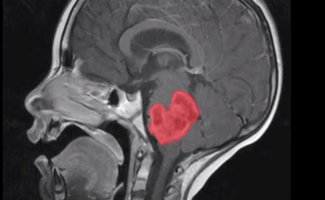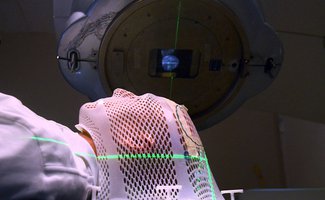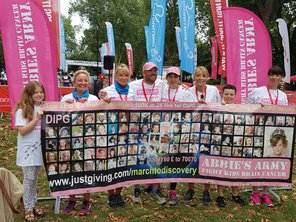What are the signs and symptoms of DIPGs?
The signs of a DIPG vary as the pons and surrounding structures (where DIPGs are located) are responsible for a variety of different body functions. Nearly all will be emergency presentations.
A child with a DIPG may display:
- Abnormal alignment of the eyes or/and double vision (diplopia).
- Weakness of facial muscles or facial asymmetry (one side of the face appearing different from the other).
- Arm and leg weakness.
- Unstable balance and co-ordination.
- Difficulties walking and speaking.
- Difficulty swallowing/unusual drooling.
- General tiredness.
- Changes in normal 'mood', unusually emotional.
In a relatively small number of cases, growth of a DIPG might block the drainage of cerebrospinal fluid (the fluid which surrounds and nourishes the brain), causing a build up of pressure in the head. This is known as hydrocephalus which is very common in other types of brain tumours. Hydrocephalus can cause symptoms such as headache (especially in the morning), nausea and fatigue.
Hydrocephalus can be deadly in itself and requires surgical intervention.
Not all cases of DIPG are identical and a child might show a combination of these symptoms.
Tests / Investigations
Some tests will need to be carried out to find out as much as possible about the type, position and size of the tumour. This will help to decide the best treatment for your child. These tests include:
CT Scan ( Computed Tomography )
It is likely a CT scan of your child’s brain was the first specific test carried out at your local hospital. Although MRI scans are usually the best way of seeing the tumour and the effects of treatment, sometimes CT scans are also useful. X-rays to make detailed pictures of parts of your body and the structures inside your body. During the test, you will lie on a table that is attached to the CT scanner. The CT scanner is a large doughnut-shaped machine.
MRI Scan (Magnetic Resonance Imaging)
This scan allows us to see the brain and spine in great detail and is used regularly to diagnose and follow the effect treatment is having on your child’s tumour This type of scan uses strong magnetic fields and radio waves to produce the detailed images. You lie inside the tube during the scan.
Biopsy
As part of clinical trial a biopsy can be taken to provide stratified treatment based on targeting the present mutations after sequencing and profiling the tumour sample from your child. This is becoming more commonplace in designing DIPG therapies.







